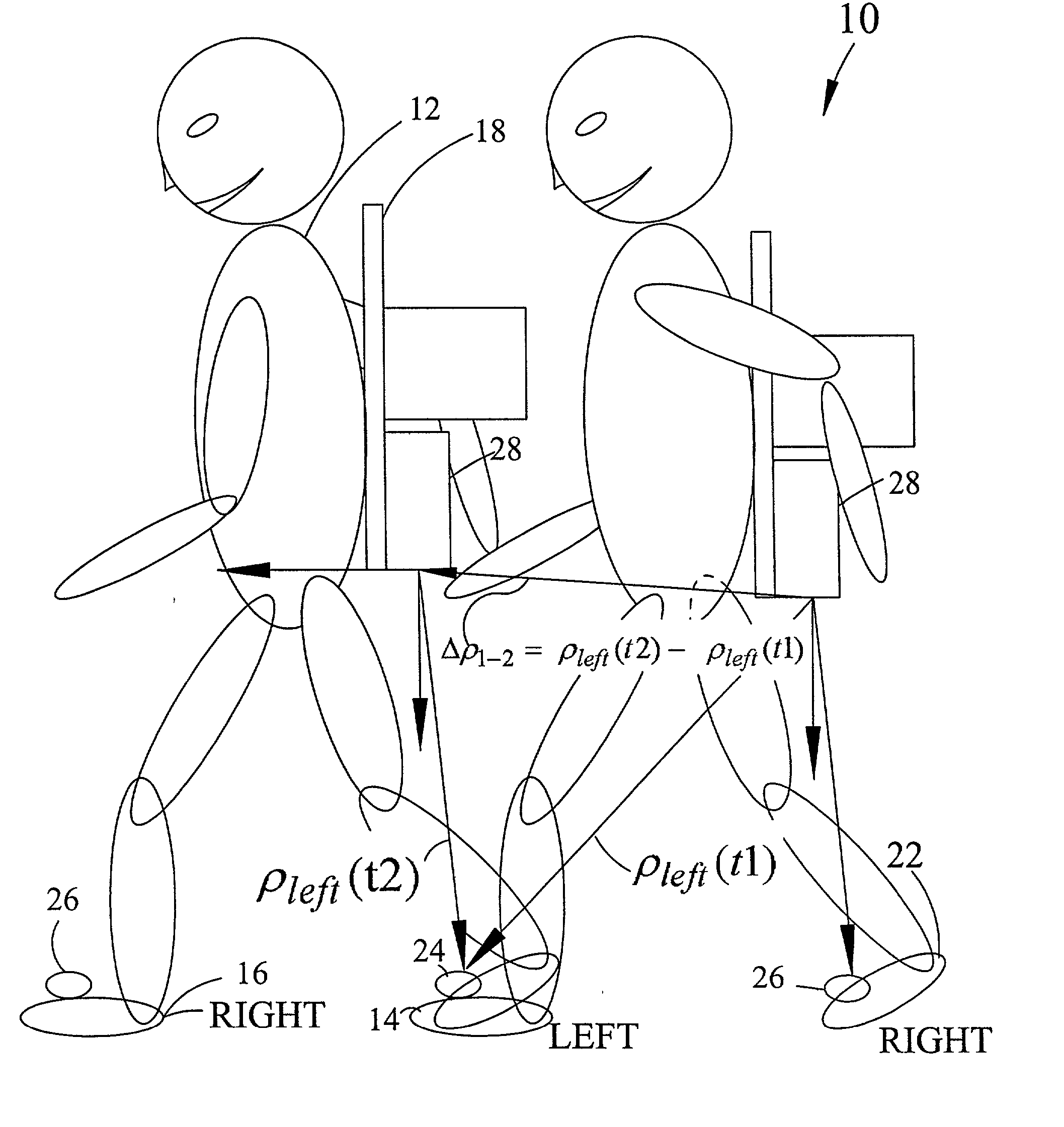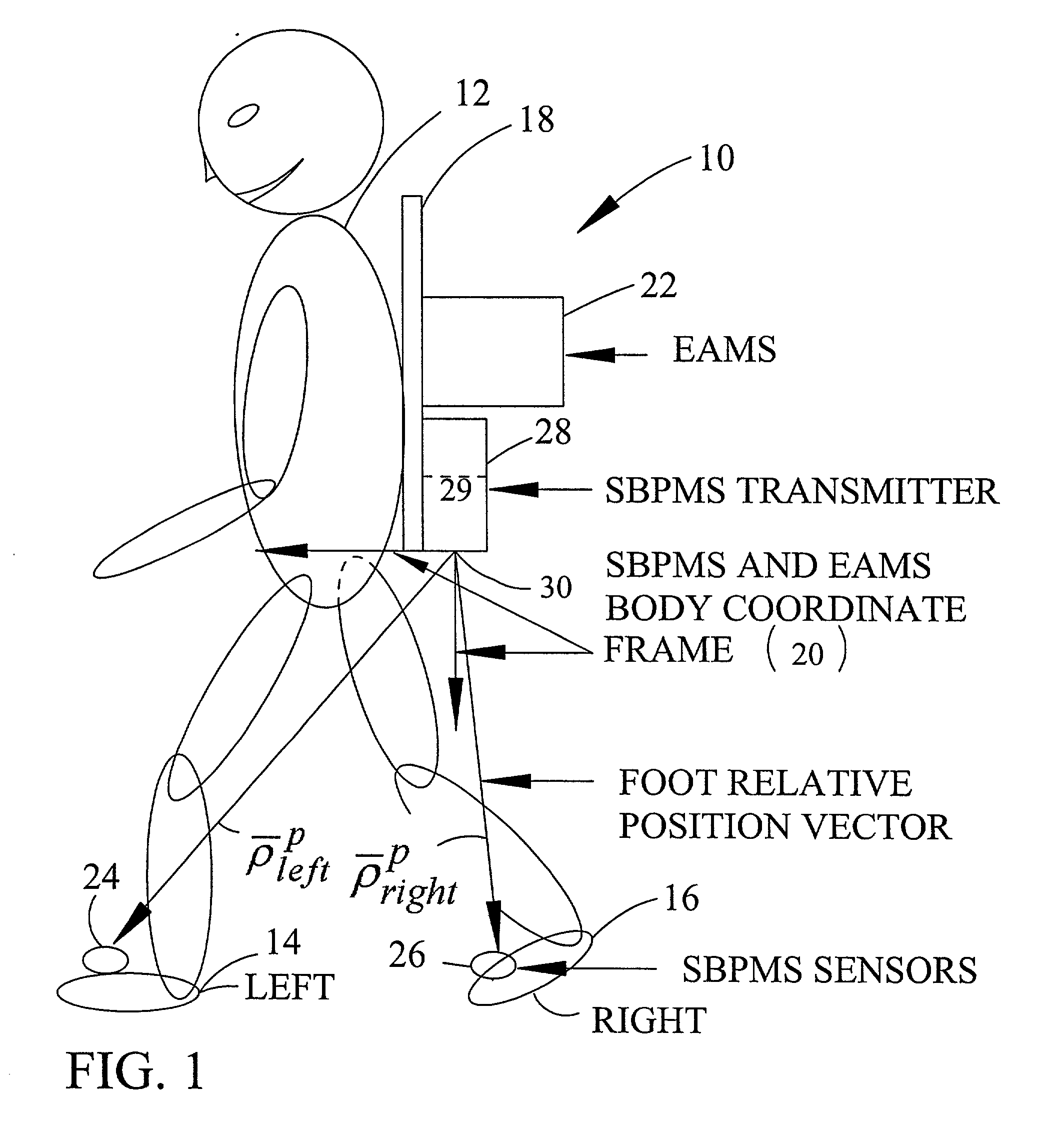Pedometer navigator system
- Summary
- Abstract
- Description
- Claims
- Application Information
AI Technical Summary
Benefits of technology
Problems solved by technology
Method used
Image
Examples
first embodiment
[0047] FIG. 3 shows the PPN, a backpack combination, called the Precise Pedometer Simple Mechanization (PPNSM) 32. The PPNSM 32 uses any EAMS 22 or Attitude and Heading Reference System (AHRS) for Euler angle measurement and an SBPMS 28 for the generation of foot time indexed relative position vector {right arrow over (.rho.)}.sub.left.sup.p and {right arrow over (.rho.)}.sub.right.sup.p shown in FIGS. 1 and 2. The SBPMS is an accurate vector measuring system such as those available from Polhemus Inc. of 40 Hercules Drive, P.O. Box 560, Colchester, Vt. 05446, USA, for foot position vector generation.
[0048] The PPNSM transforms the time-indexed relative position vectors into SBPMS left foot and right foot relative position vectors in the common geographic frame, the g-frame. The PPNSM then uses the SBPMS left foot and right foot relative position vectors to calculate a sequence of SBPMS left relative displacement vectors and right relative displacement vectors in the g-frame each of ...
second embodiment
[0049] FIG. 6 schematically shows the PPN 10, the Precise Pedometer Aided INS (PPAINS) 34 as a backpack combination. The PPAINS 34 combination is the preferred embodiment or best mode for practicing the invention in terms of achievable accuracy and flexibility of use. FIG. 7 is a schematic block diagram of the PAINS combination 34. An Aided Inertial Navigation System (AINS) 36 is available from Applanix, the assignee as well as from a number of other supplier of inertial guidance systems such as the Guidance Systems Division of Litton Systems, Inc. of Woodland Hills, Calif., and an accurate SBPMS 28 system is available from Polhemus Inc. of 40 Hercules Drive, P.O. Box 560, Colchester, Vt. 05446, USA.
[0050] Unlike the SBPMS, the PPAINS 34 does not use the vector information from the SBPMS to calculate an aggregate SBPMS position displacement vector. The PPAINS system uses the computed SBPMS left and right relative displacement vectors from each step as aiding data for the Kalman filt...
PUM
 Login to View More
Login to View More Abstract
Description
Claims
Application Information
 Login to View More
Login to View More - R&D
- Intellectual Property
- Life Sciences
- Materials
- Tech Scout
- Unparalleled Data Quality
- Higher Quality Content
- 60% Fewer Hallucinations
Browse by: Latest US Patents, China's latest patents, Technical Efficacy Thesaurus, Application Domain, Technology Topic, Popular Technical Reports.
© 2025 PatSnap. All rights reserved.Legal|Privacy policy|Modern Slavery Act Transparency Statement|Sitemap|About US| Contact US: help@patsnap.com



